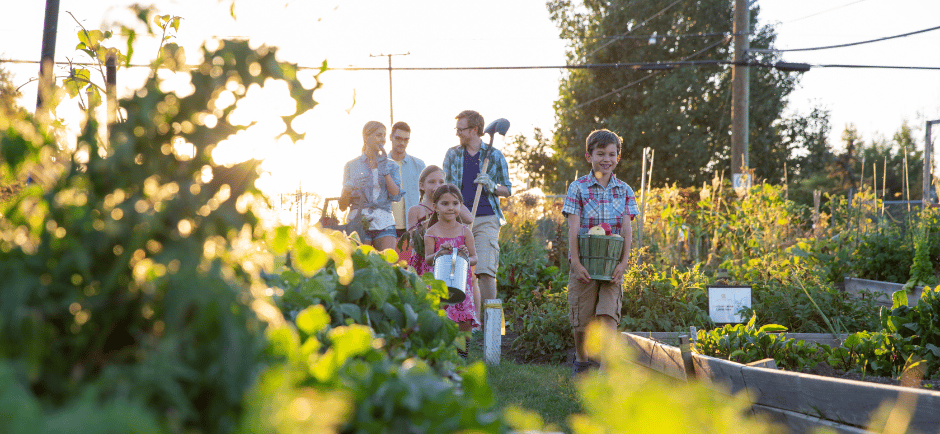Join our next In Person Info Session December 13 from 11am-1pm MST
The Economics of Cohousing: Is It Affordable?
In this post, we analyze the financial aspects of living in a cohousing community, including cost-sharing, reduced living expenses, and the long-term value of communal living.
Gratitude Village
10/13/20245 min read


The Economics of Cohousing: Is It Affordable?
Cohousing, a model of living that combines private homes with shared spaces and communal living, has gained traction as a sustainable and community-oriented alternative to traditional housing. While the social and environmental benefits of cohousing are widely recognized, a key question remains: Is cohousing affordable? In this blog, we'll explore the economics of cohousing, examining factors such as initial costs, long-term savings, and the overall financial impact of choosing this lifestyle. By understanding these aspects, potential residents can better assess whether cohousing is a financially viable option for them.
1. Initial Costs: Comparing Cohousing with Traditional Housing
The initial costs of entering a cohousing community can vary widely depending on location, the size of the community, the size, type and number of shared amenities, and the type of development. In some cases, the upfront costs may be comparable to purchasing a home in a traditional neighborhood, while in others, they may be slightly higher due to the additional expenses associated with building and maintaining shared spaces.
For example, in a cohousing community, residents typically contribute to the cost of constructing or maintaining common facilities such as a common house, shared gardens, and recreational spaces. These facilities are integral to the cohousing model, as they provide the physical spaces where community interactions occur. While these shared spaces enhance the quality of life, they can add to the initial purchase price.
However, it's essential to consider what you're getting for your money. The initial investment in cohousing includes access to amenities and spaces that would otherwise be private, such as a guest room in the common house or a communal kitchen. In traditional housing, these amenities would either not exist or would require additional personal investment, such as purchasing a larger home or paying for memberships to external facilities. Additionally, some cohousing communities offer affordable housing options or use cooperative ownership models that can reduce upfront costs. In these cases, residents may pay a lower initial cost in exchange for participating in the community’s management and maintenance activities. This can make cohousing more accessible to a broader range of people, including those who might be priced out of traditional home ownership. Some communities have even succeeded at subsidizing some of the units in their community to make them more affordable to a wider range of income levels.
2. Long-Term Savings: Shared Resources and Lower Utility Costs
One of the primary economic advantages of cohousing is the potential for long-term savings. These savings arise from the community's emphasis on sharing resources and reducing individual consumption. For instance, in a traditional neighborhood, each household might own its own set of power tools, appliances both large and small, and extra vehicles. In a cohousing community, these items are often shared, reducing the need for each household to purchase and maintain its own. This shared approach can lead to significant savings over time. For example, rather than each household buying a lawnmower, snowblower or a car, the community might share these items, spreading the costs across multiple families. This reduces the financial burden on each household and can lead to a lower overall cost of living.
Moreover, cohousing communities often prioritize sustainability, which can lead to lower utility costs. Many cohousing developments are designed with energy efficiency in mind, using renewable energy sources, energy-efficient appliances, and sustainable building materials. The result is often lower energy bills, which can contribute to long-term savings. Additionally, shared heating, cooling, and water systems in common areas can further reduce utility costs, as these systems are typically more efficient than individual units.
Another area where cohousing can lead to savings is in food costs. Many communities have communal gardens where residents grow their own produce, reducing the need to buy fruits and vegetables from the store. Shared meals, which are common in cohousing communities, also help reduce individual food costs by allowing residents to pool resources and buy in bulk.
3. Maintenance and Management: Collective Responsibility and Cost Efficiency
In traditional home ownership, maintenance and management costs can add up quickly. Homeowners are responsible for everything from lawn care to roof repairs, which can be both time-consuming and expensive. Additionally, these costs are often unpredictable, making it challenging for homeowners to budget effectively. In a cohousing community, maintenance and management responsibilities are typically shared among residents, which can lead to cost efficiencies. For example, rather than each household hiring a separate contractor for maintenance work, the community might collectively hire a single contractor, negotiating a better rate for bulk services. Additionally, many cohousing communities have a strong DIY ethos, with residents contributing their skills and labor to maintain the property, further reducing costs.
The collective management model also extends to financial planning. In traditional housing, each homeowner must manage their own finances, including saving for future repairs and maintenance. In cohousing, the community often pools resources into a common fund, which is used for both regular maintenance and larger projects. This shared financial responsibility can lead to more efficient use of resources and reduce the financial stress on individual households.
4. Economic Resilience: Building a Supportive Community
Beyond direct financial considerations, cohousing offers a form of economic resilience that is less tangible but equally important. By living in a community where neighbors actively support one another, residents are less likely to face financial hardships alone. Whether it’s through shared childcare, carpooling, or simply lending a hand when needed, the cooperative nature of cohousing can provide a safety net that isn’t available in more traditional living arrangements. Furthermore, cohousing communities often have a strong emphasis on skills-sharing and mutual support, which can translate into economic benefits. For example, residents might barter services—such as gardening, cooking, or home repairs—rather than paying for them, keeping more money within the community. This kind of informal economy can be particularly valuable during economic downturns, providing residents with a buffer against external financial pressures.
5. The Value of Community: Weighing the Costs and Benefits
While the economics of cohousing are an important consideration, it’s also crucial to weigh the financial aspects against the non-monetary benefits. The sense of community, mutual support, and shared responsibility that cohousing offers can significantly enhance the quality of life, which is difficult to quantify in purely economic terms. For many people, the decision to move into a cohousing community is not just about saving money—it's about investing in a way of life that prioritizes relationships, sustainability, and a sense of belonging. These intangible benefits can make the initial costs and potential trade-offs well worth it for those who value a more connected and collaborative lifestyle.
Ultimately, the question of whether cohousing is affordable depends on various factors, including initial costs, long-term savings, and the value residents place on community and sustainability. While cohousing may involve higher upfront costs in some cases, the potential for long-term savings, shared responsibilities, and economic resilience make it an attractive option for many. The affordability of cohousing is not just a matter of dollars and cents—it's about finding a living arrangement that aligns with your values, supports your financial well-being, and enhances your quality of life. For those seeking a more connected, sustainable, and economically resilient lifestyle, cohousing may indeed be the more affordable—and rewarding—choice.
COMMUNITY
Join us in embracing nature, diversity and connection.
Sustainability
DIVERSITY
info@gratitudevillageco.com
720-689-4821
© 2025. All rights reserved.
AFFORDABILITY
Gratitude Village Inc. is a 501(c)3 charitable corporation that values diversity, equity, and inclusion as essential to our mission
Subscribe to our Substack
Refund Policy




Gratitude Village is a Proud Member of these organizations
